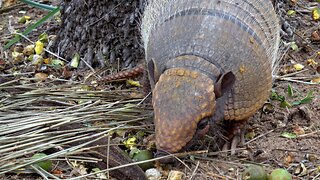Premium Only Content

Buffalo and lion fighting runing africar safari.
1) Lions live in a group which is called as "pride"; 10 to 40 lions live in a pride.
2) In the group there are only 1 to 2 adult lions and others are lioness and their cubs.
3) Lions are very protective to themselves, their cubs and their area where they live.
4) Lions fight with other animals in order to protect their food as well as their group.
5) Male lions generally stay with their group and female lions do the hunting.
6) Approximately there are 10 sub-species of lions found in different parts of the world.
7) "South African Lion" or "Transvaal Lion" is considered as the largest sub-species of lions.
8) There are approximately 20000 to 39000 lions left in the world with 650 lions living in India.
9) Excessive hunting of lions has reduced their population worldwide which is posing a threat to ecosystem.
10) Lions are also kept in zoo for entertainment and recreation of the
people.
The African buffalo is a very robust species. Its shoulder height can range from 1.0 to 1.7 m (3.3 to 5.6 ft) and its head-and-body length can range from 1.7 to 3.4 m (5.6 to 11.2 ft). The tail can range from 70 to 110 cm (28 to 43 in) long.[3] Compared with other large bovids, it has a long but stocky body (the body length can exceed the wild water buffalo, which is heavier and taller) and short but thickset legs, resulting in a relatively short standing height. Cape buffaloes weigh 425 to 870 kg (937 to 1,918 lb), with males normally larger than females, reaching the upper weight range.[4] In comparison, African forest buffaloes, at 250 to 450 kg (600 to 1,000 lb), are only half that size.[5] Its head is carried low; its top is located below the backline. The front hooves of the buffalo are wider than the rear, which is associated with the need to support the weight of the front part of the body, which is heavier and more powerful than the back.
Savannah-type buffaloes have black or dark brown coats with age. Old bulls often have whitish circles around their eyes and on their face. Females tend to have more-reddish coats. Forest-type buffaloes are 30-40% smaller, reddish brown in colour, with much more hair growth around the ears and with horns that curve back and slightly up. Calves of both types have red coats.
A characteristic feature of the horns of adult male African buffalo (southern and eastern populations) is that the bases come very close together, forming a shield referred to as a "boss". From the base, the horns diverge downwards, then smoothly curve upwards and outwards and in some cases inwards and or backwards. In large bulls, the distance between the ends of the horns can reach upwards of one metre (the record being 64.5 inches 164 cm). The horns form fully when the animal reaches the age of 5 or 6 years old, but the bosses do not become "hard" until it reaches the age of 8 to 9 years old. In cows, the horns are, on average, 10–20% smaller, and they do not have a boss. Forest-type buffalo horns are smaller than those of the savanna-type buffaloes from Southern and East Africa, usually measuring less than 40 centimetres (16 in), and are almost never fused.
-
 1:27
1:27
Animals Planet
2 years ago10 minutes after birth kittens meow loudly.
3381 -
 1:23
1:23
WildCreatures
8 days ago $0.90 earnedThis mother armadillo eating her palm nuts is truly adorable
1.83K9 -
 8:59
8:59
The Art of Improvement
8 hours agoHow to Build the Most Powerful Mindset for Success
68 -
 LIVE
LIVE
GritsGG
1 day ago36 Hour Stream! Most Wins 3420+ 🧠
1,524 watching -
 1:26:16
1:26:16
Michael Franzese
17 hours agoMenendez Brothers Denied Parole – Newsom Holds Their Fate
105K79 -
 2:36:02
2:36:02
I_Came_With_Fire_Podcast
16 hours agoSecret Origins of Transhumanism & The New Atlantis
28.2K16 -
 LIVE
LIVE
sophiesnazz
2 hours ago $0.01 earnedLETS TALK ABOUT BO7 !socials !specs
66 watching -
 LIVE
LIVE
MadHouseRetro
2 hours agoPUFFCO PIVIOT BUNDLE GIVEAWAY! and Spider-man 2 playthough!
63 watching -
 1:12:40
1:12:40
Wendy Bell Radio
12 hours agoPet Talk With The Pet Doc
61.9K32 -
 LIVE
LIVE
Biscotti-B23
1 hour ago $0.01 earned🔴 LIVE TOURNAMENT PRACTICE ⚔ TOP 100 RANK 👑 DEMON SLAYER HINOKAMI CHRONICLES 2
83 watching